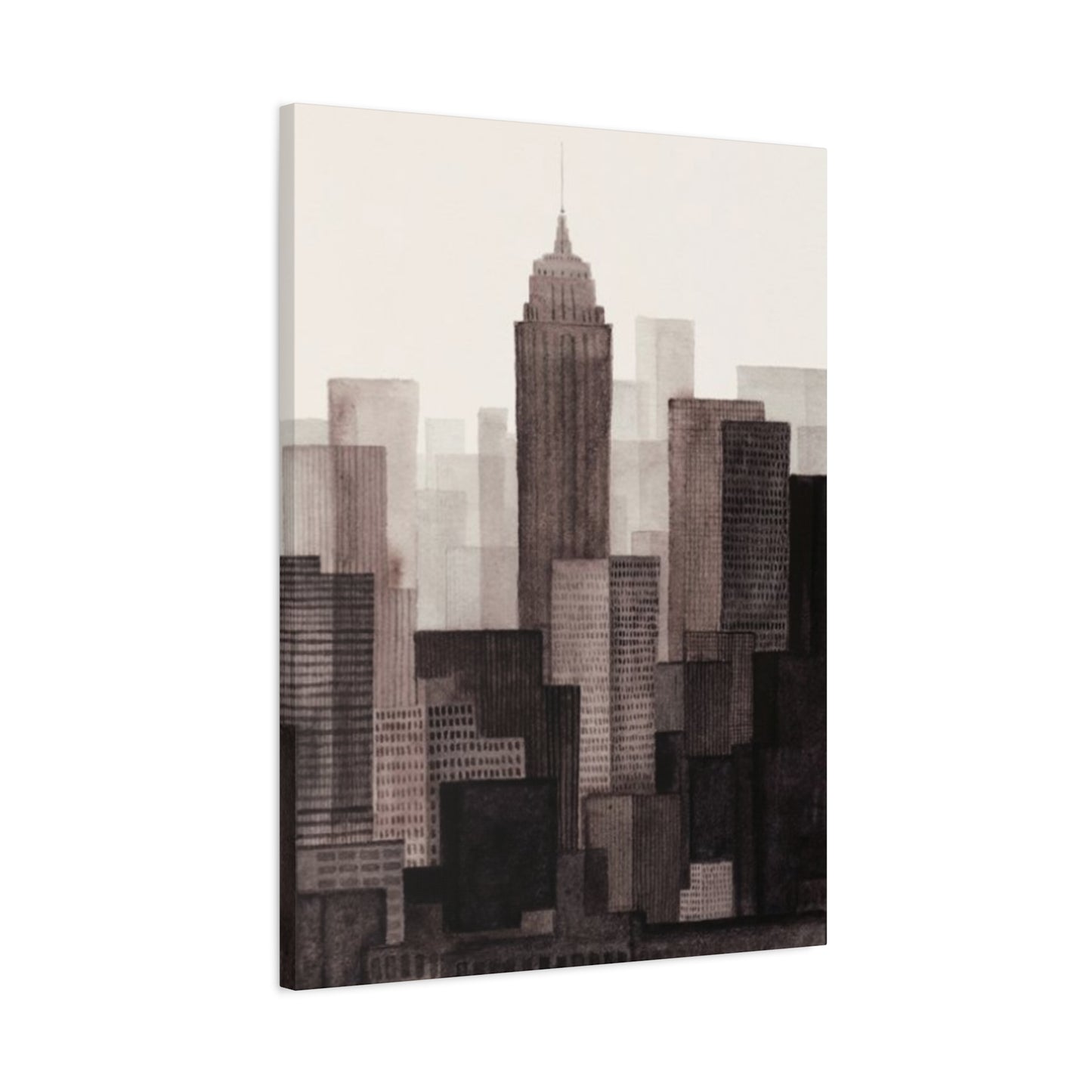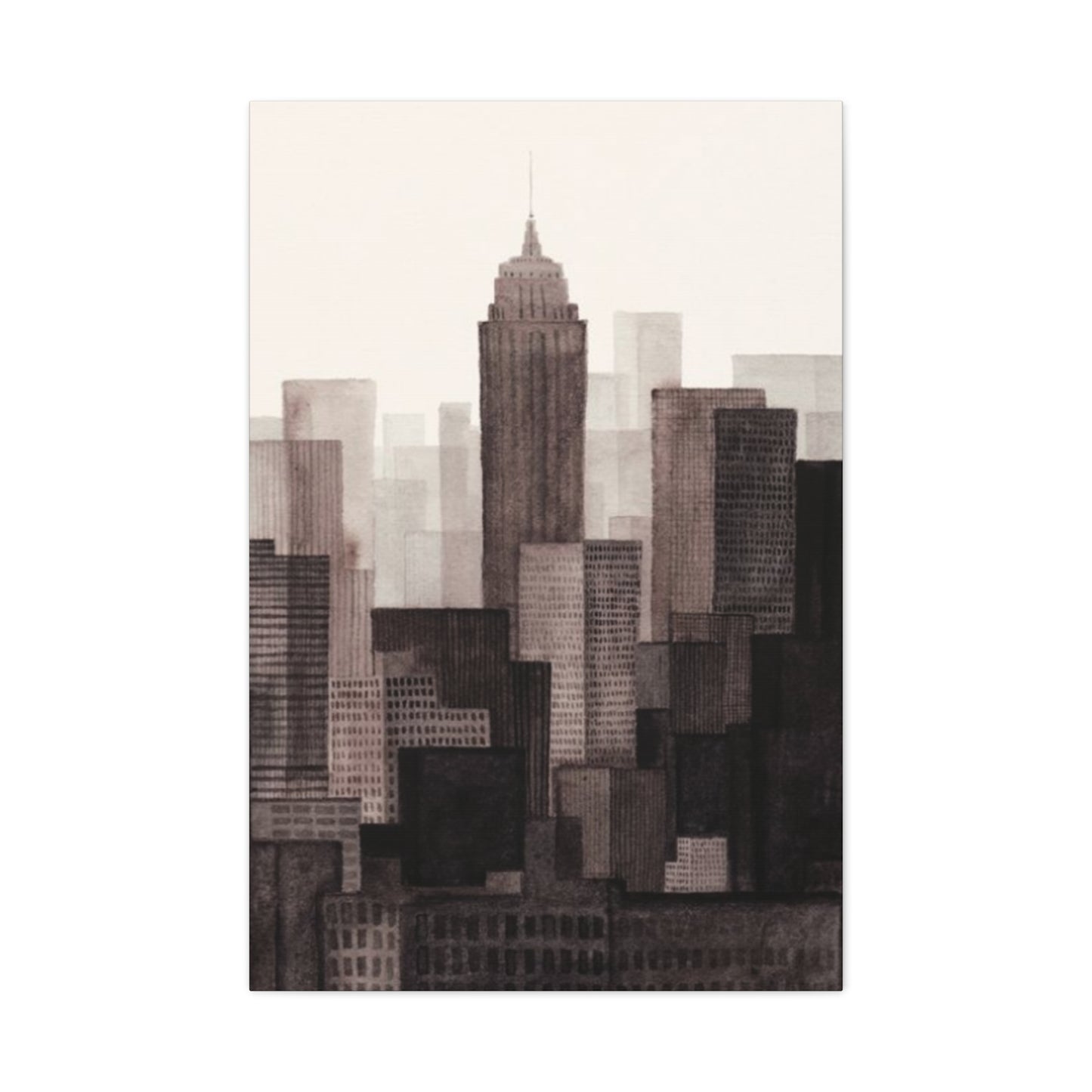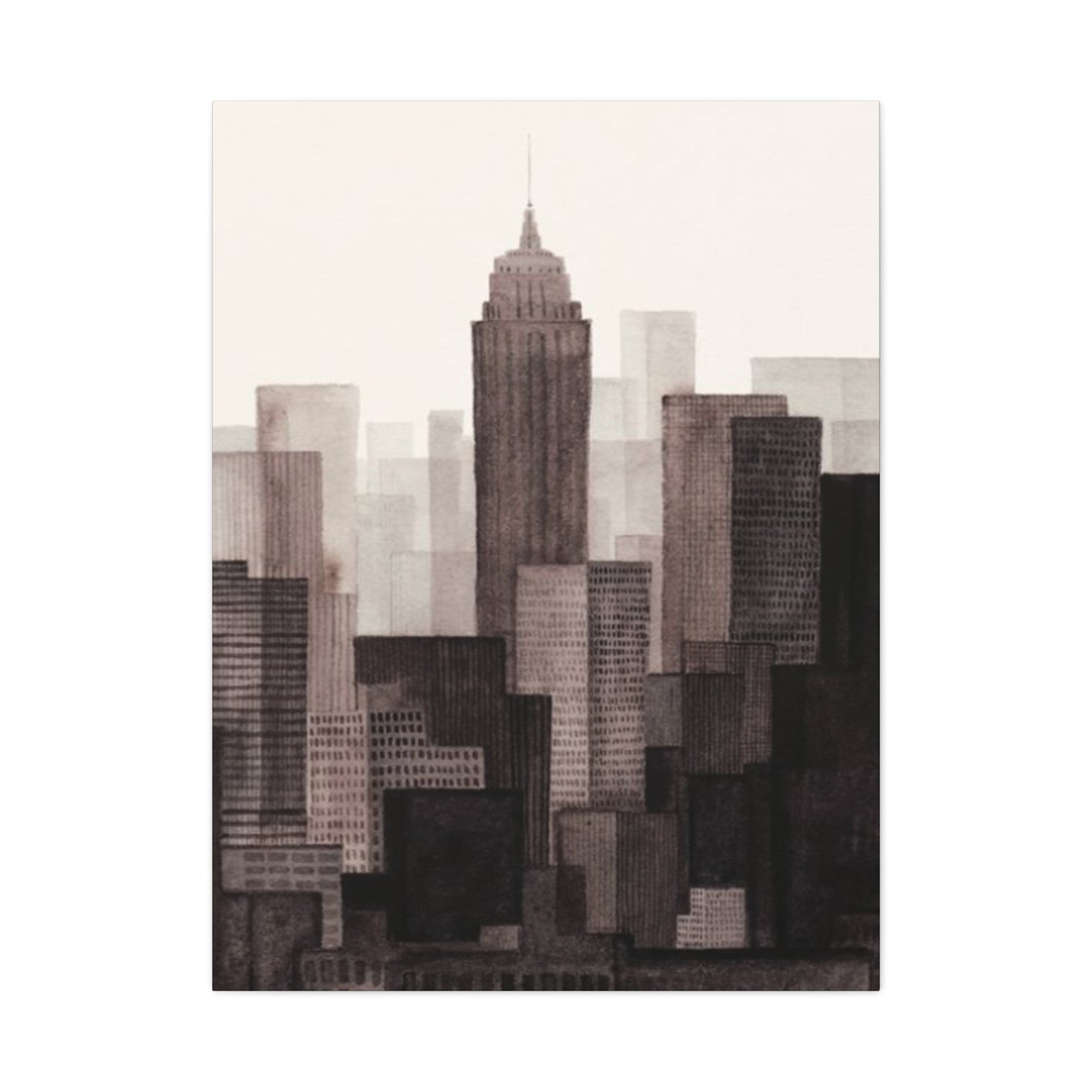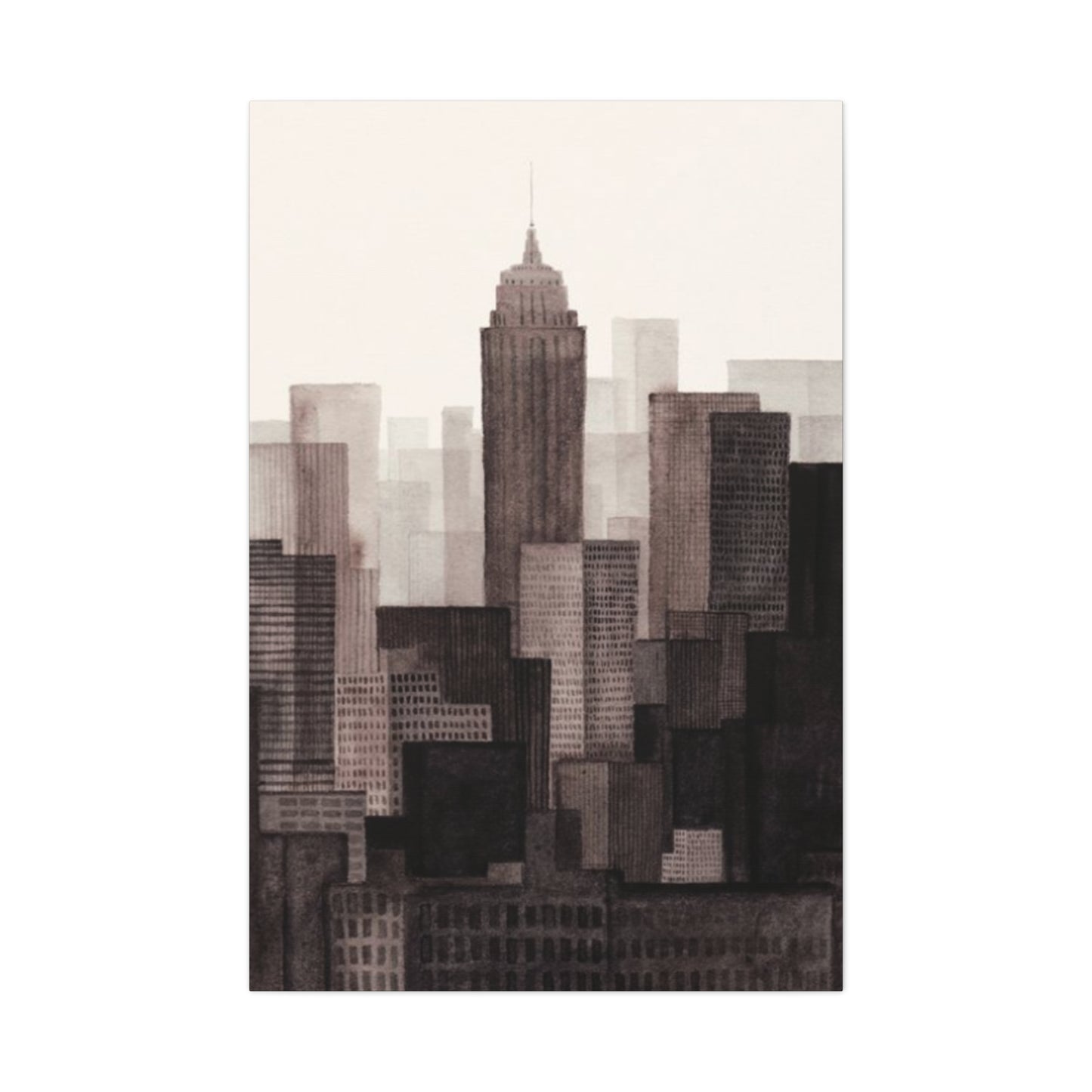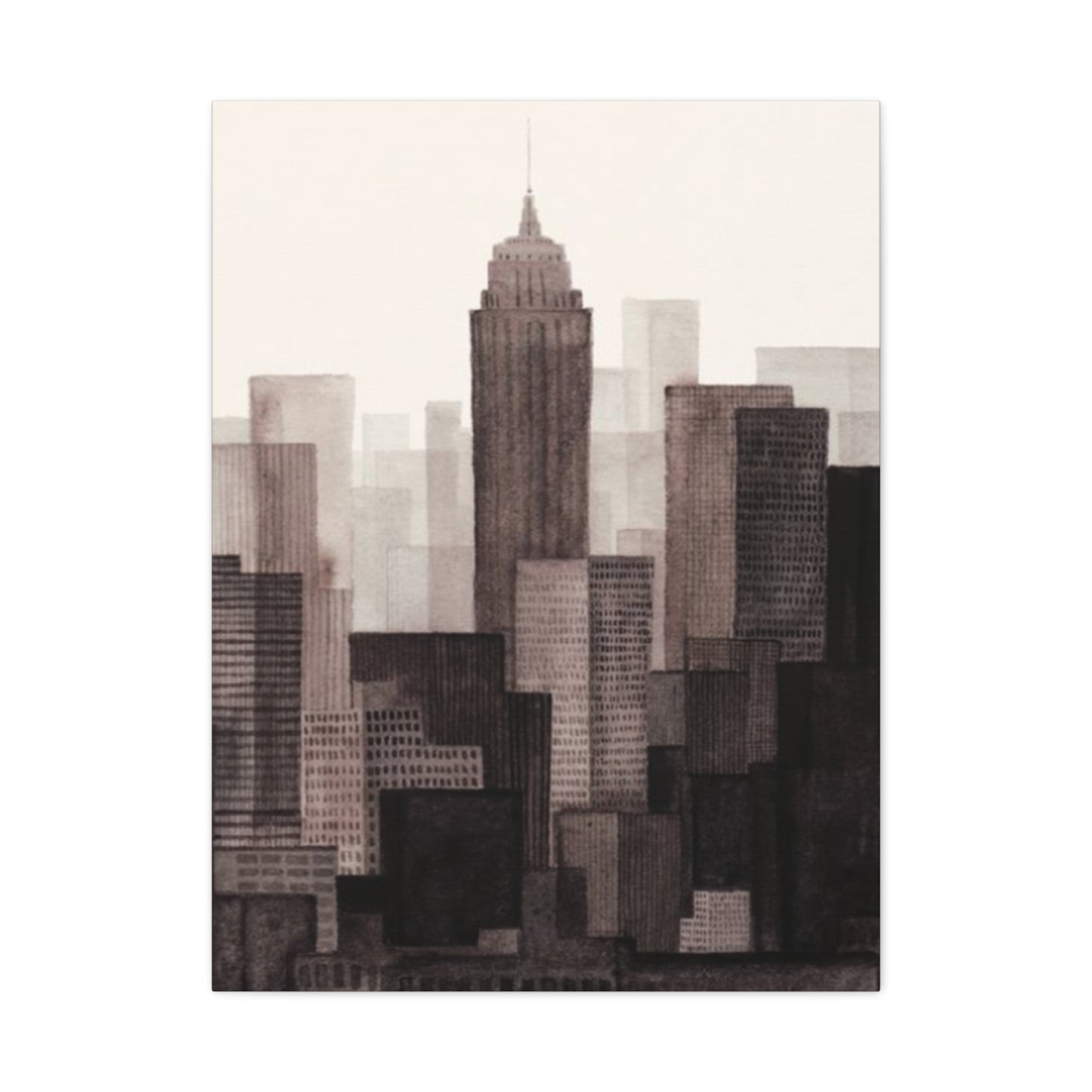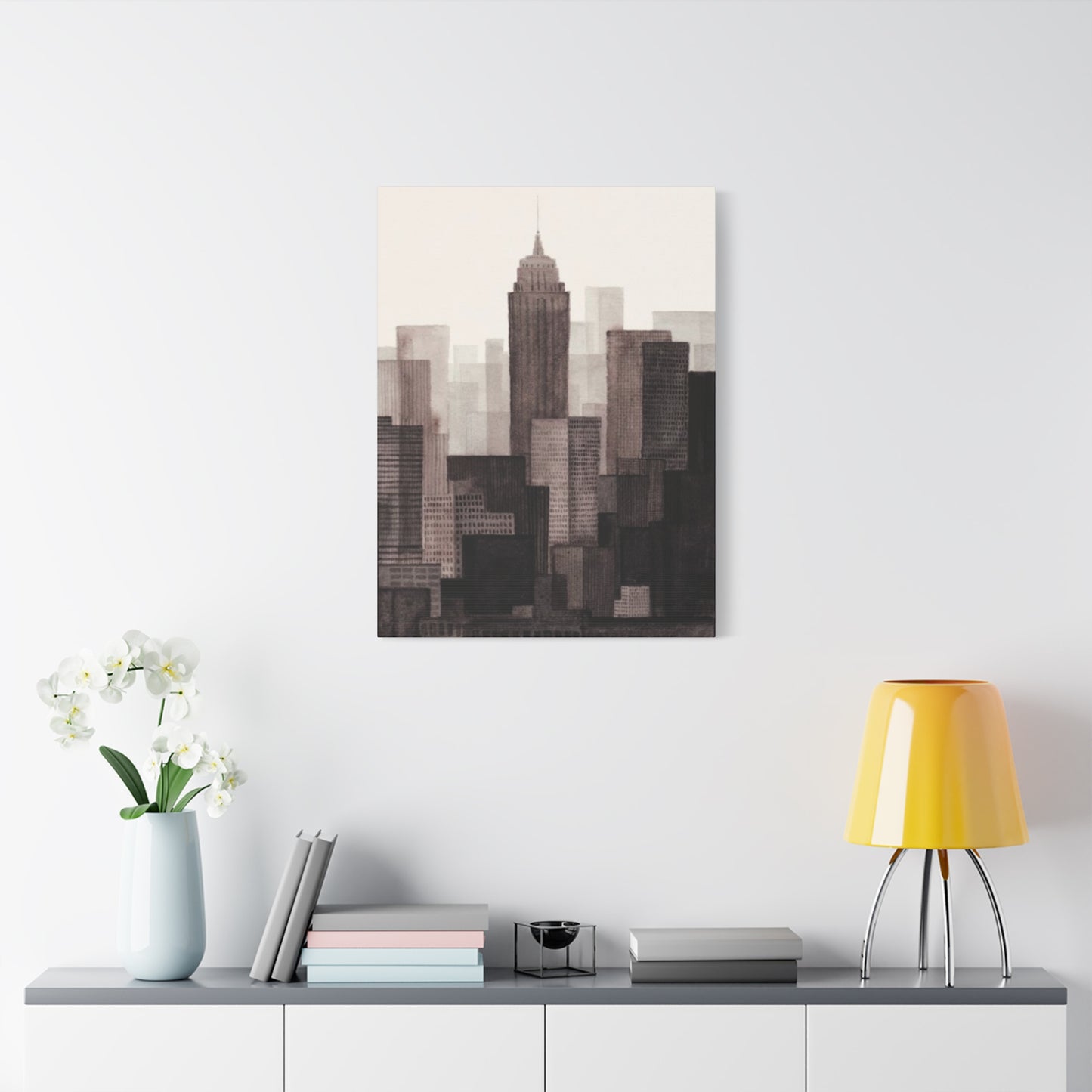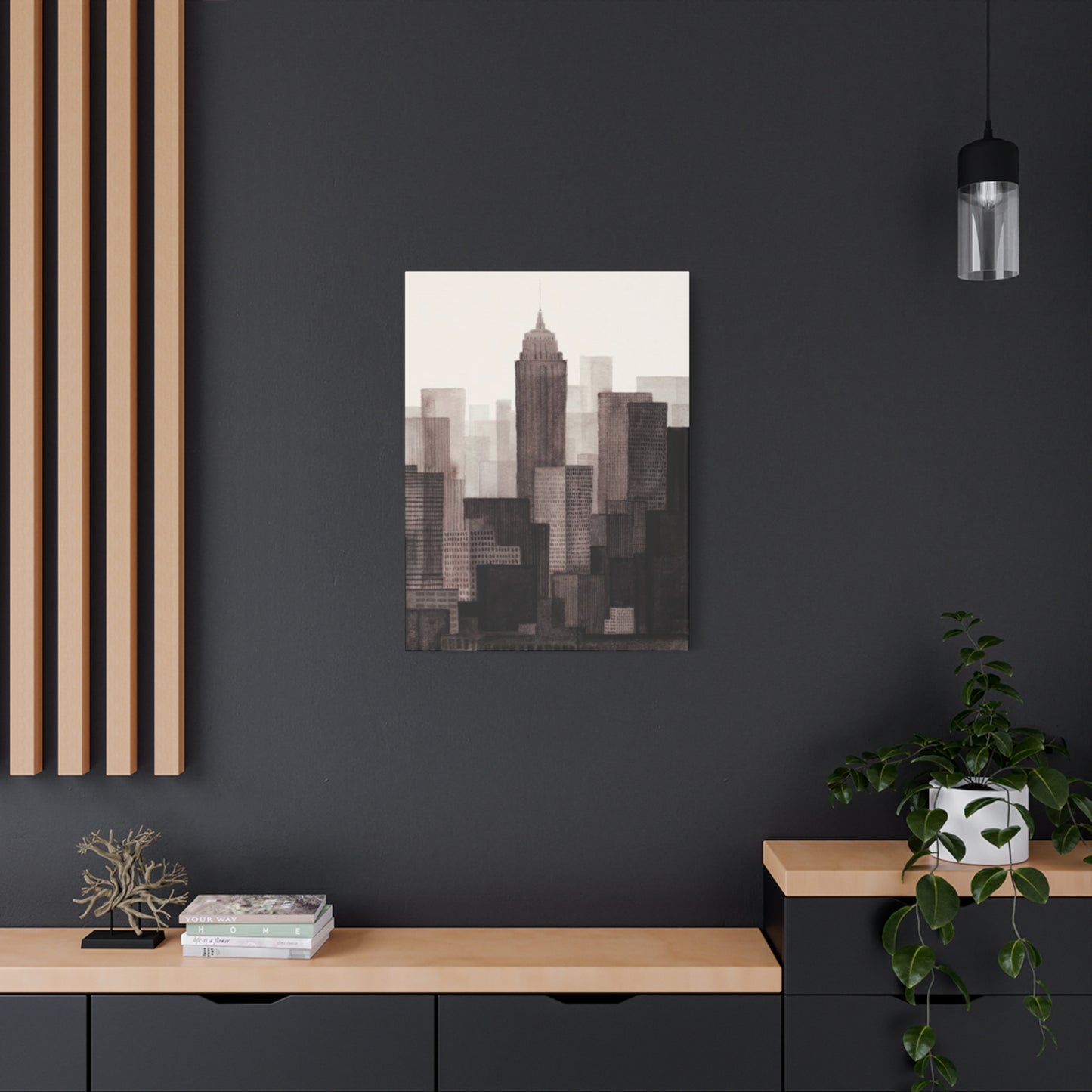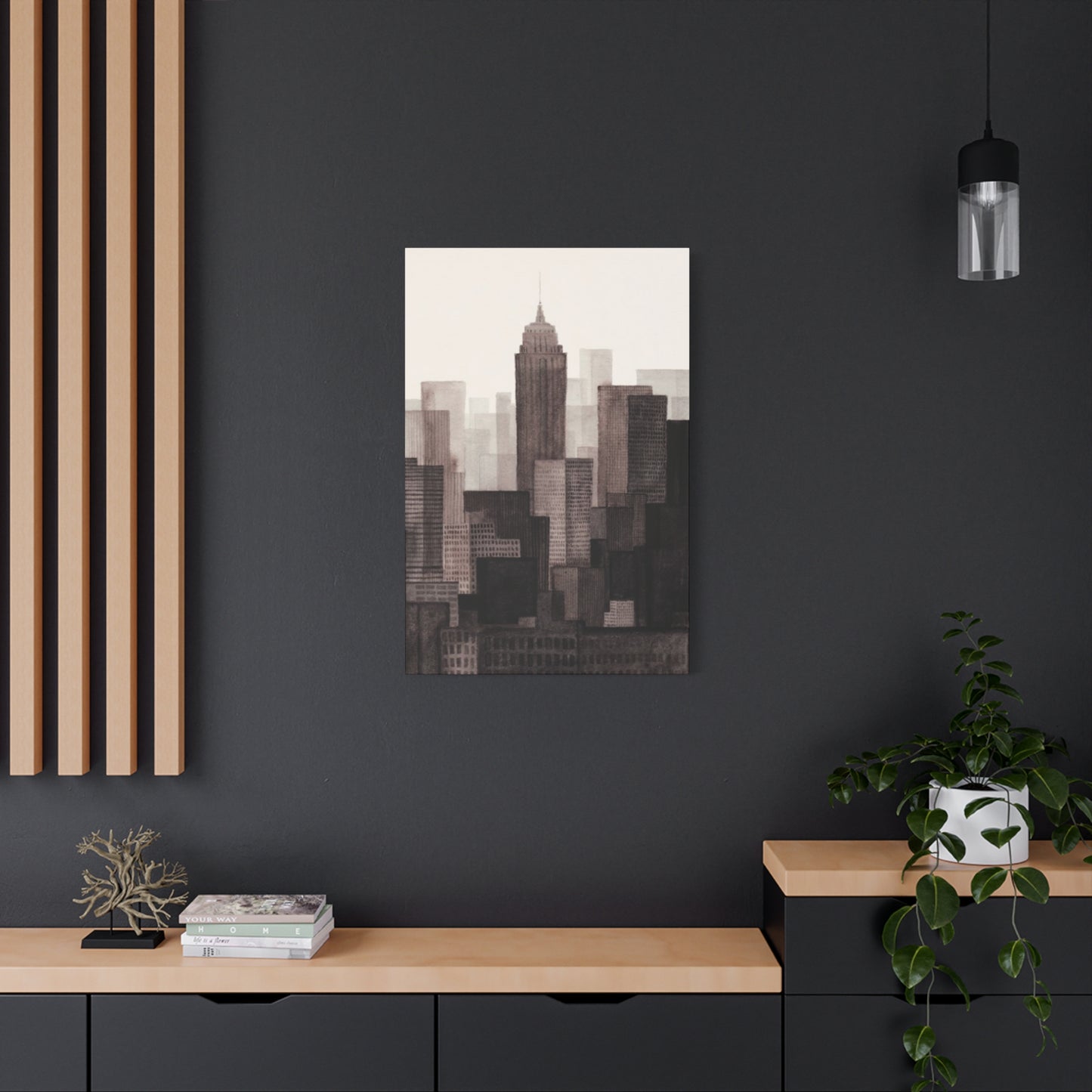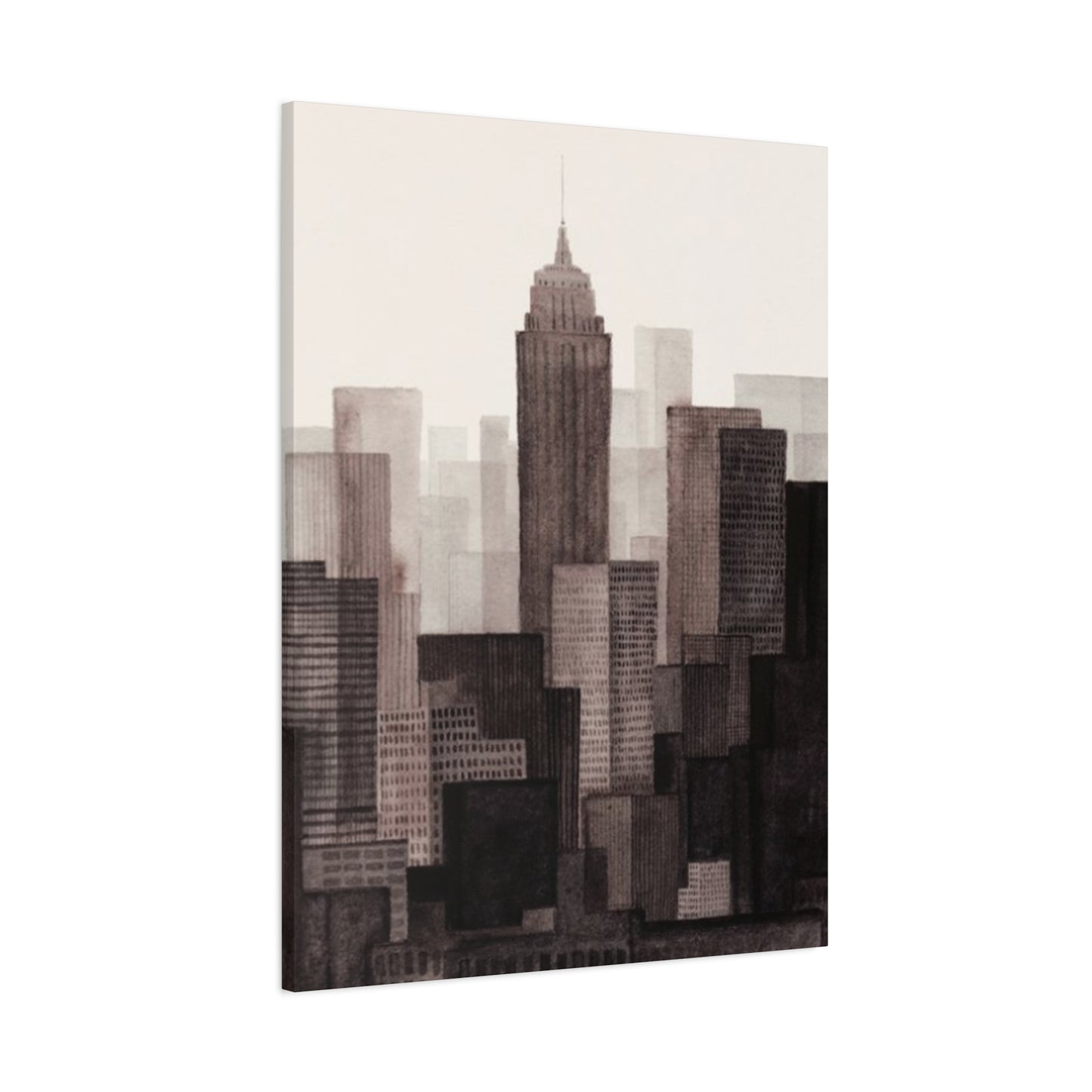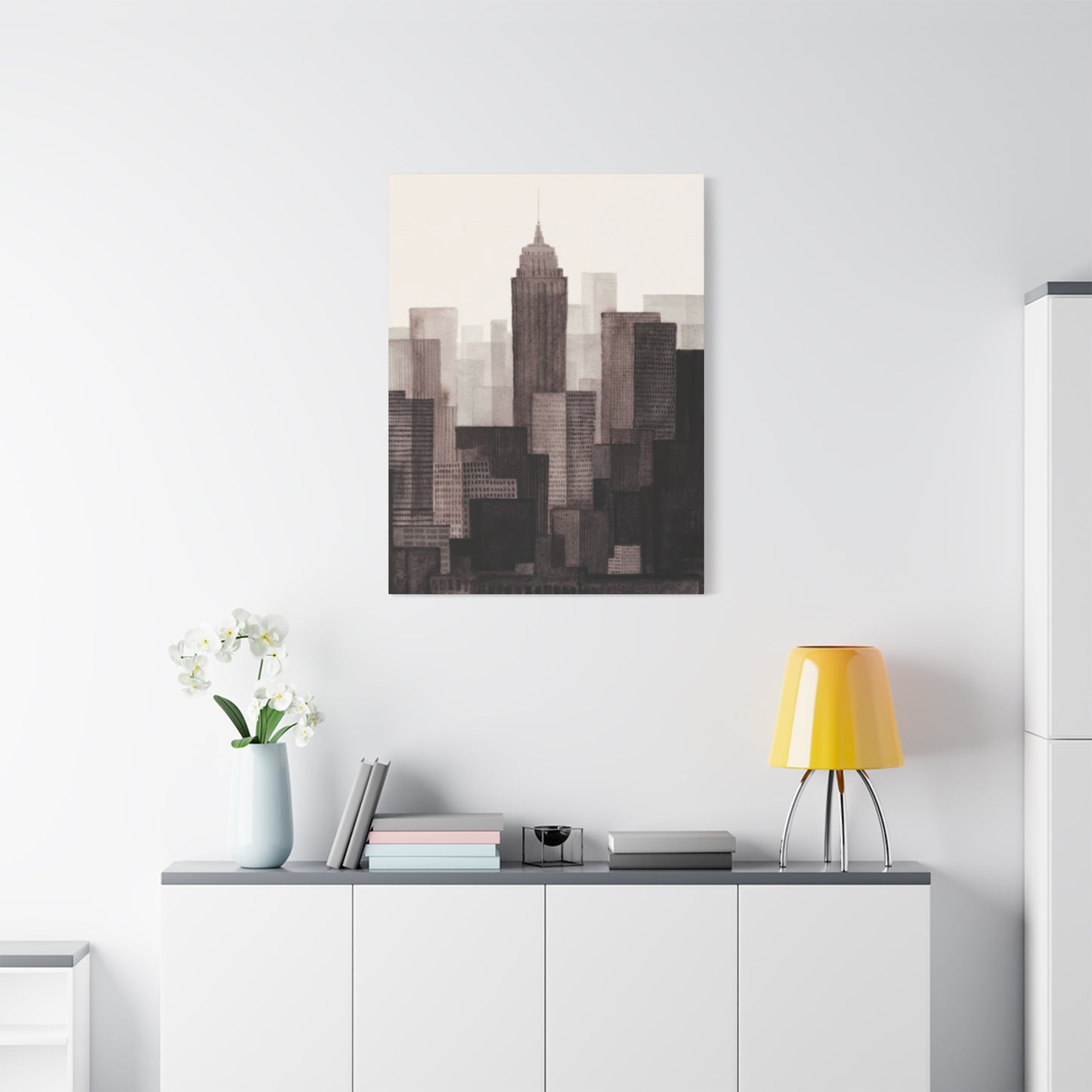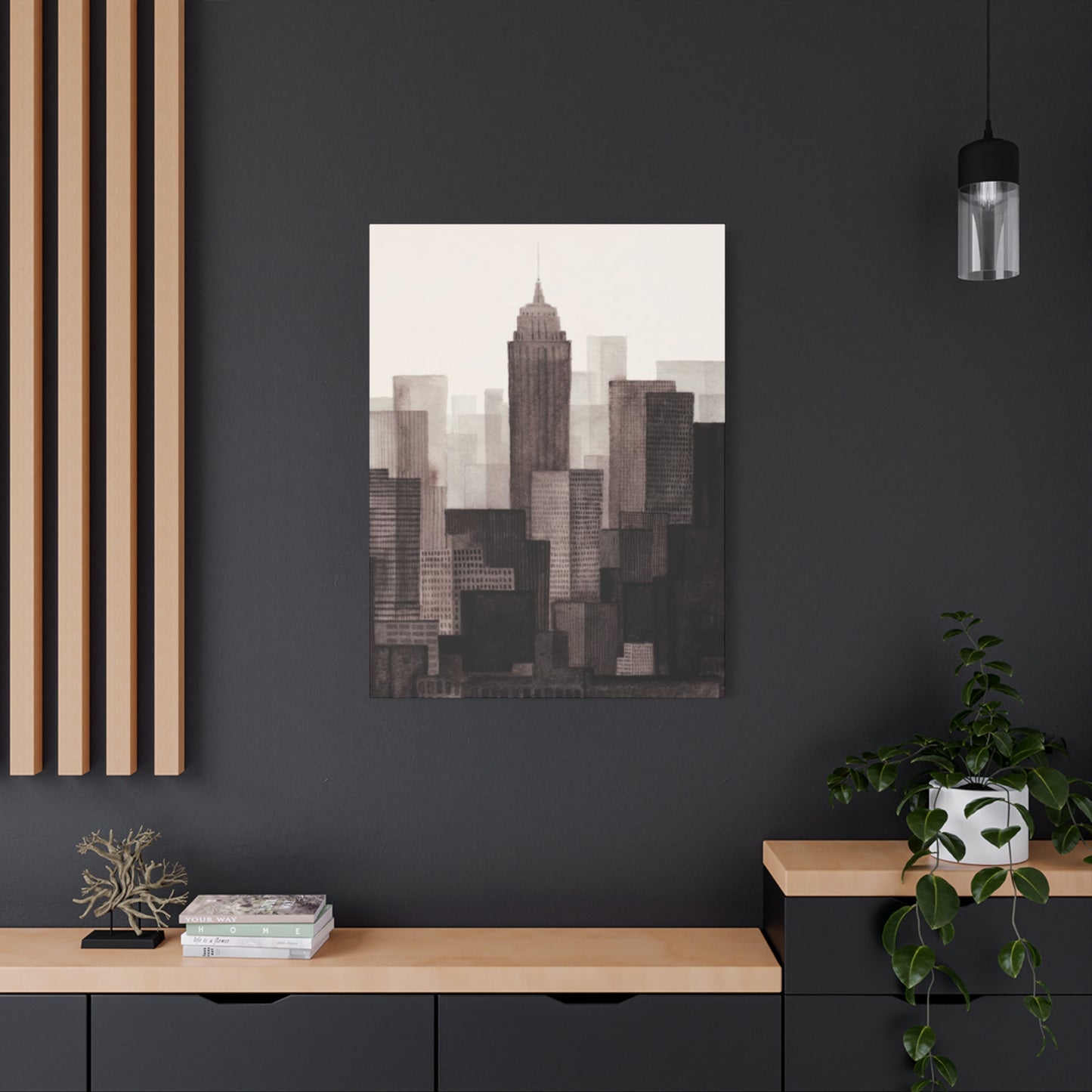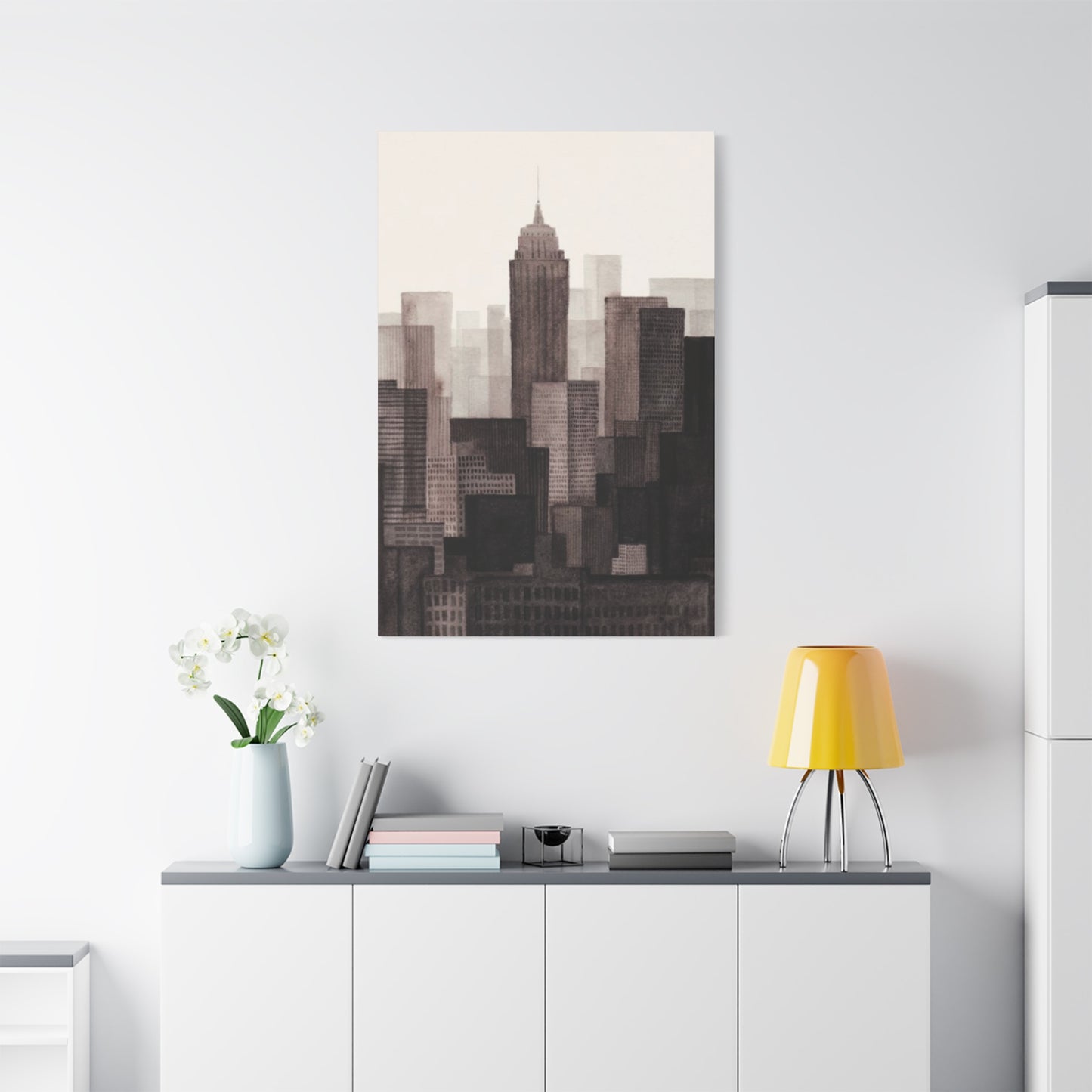NYC Skyline Wall Art: Iconic City Views on Canvas
The iconic New York City skyline has captured hearts and imaginations for decades, representing dreams, ambition, and the relentless spirit of urban life. When rendered in striking black and white, these cityscapes become even more powerful, offering a timeless aesthetic that transcends fleeting design trends. Black and white city skyline wall art featuring NYC has emerged as one of the most sought-after decorative elements for contemporary homes, offices, and commercial spaces.
Canvas prints showcasing the Manhattan skyline in monochromatic tones provide an elegant solution for those seeking sophisticated urban artwork. These pieces combine the raw energy of New York City with the refined simplicity of black and white photography, creating visual statements that work seamlessly across various interior design styles. From minimalist modern apartments to traditional office spaces, NYC skyline wall art adapts effortlessly while maintaining its commanding presence.
The appeal of black and white city photography extends beyond mere aesthetics. These images capture the architectural grandeur of Manhattan's skyscrapers while emphasizing contrast, texture, and geometric forms that might otherwise be overshadowed by color. The absence of color forces viewers to focus on the essential elements: the towering buildings, the interplay of light and shadow, and the dramatic silhouettes that define New York's unmistakable profile.
Historical Significance of NYC Skyline Photography
New York City's skyline has evolved dramatically over the past century, with each era leaving its distinctive mark on the urban landscape. Black and white photography emerged as the primary medium for documenting this transformation during the early to mid-20th century, when color photography was still expensive and technically challenging. This historical context adds depth and authenticity to contemporary black and white NYC skyline wall art.
The golden age of architectural photography in New York coincided with the construction of iconic buildings like the Empire State Building, Chrysler Building, and the original World Trade Center towers. Photographers like Berenice Abbott, Andreas Feininger, and Walker Evans captured these monuments in striking black and white images that have become synonymous with the city's identity. Their work established a visual language that continues to influence modern skyline photography and canvas art.
During the 1930s and 1940s, black and white photography was not just an artistic choice but a necessity. The technical limitations of the time meant that most professional architectural photography was executed in monochrome. This constraint actually enhanced the dramatic impact of skyline images, as photographers learned to work with contrast, shadows, and geometric compositions to create compelling visual narratives.
The documentary tradition of New York street photography also contributed to the popularity of black and white urban imagery. Photographers working for publications like Life magazine and major newspapers developed techniques for capturing the city's energy and scale in monochromatic images. These historical photographs now serve as inspiration for contemporary artists creating NYC skyline wall art for modern interiors.
Modern black and white NYC skyline canvas prints often reference these historical precedents while incorporating contemporary photographic techniques and printing technologies. Digital processing allows artists to achieve the rich contrasts and fine detail that characterize the best vintage New York photography, while modern canvas printing techniques ensure longevity and museum-quality reproduction.
Architectural Elements That Define NYC Skyline Art
The visual power of New York City skyline art stems from the distinctive architectural elements that create the city's unique profile. Each building contributes to an overall composition that has been refined over more than a century of urban development. Black and white treatment emphasizes these architectural features by stripping away the distractions of color and focusing attention on form, scale, and relationship between structures.
The Empire State Building remains one of the most recognizable elements in NYC skyline wall art, with its Art Deco spire and distinctive setbacks creating a focal point in most Manhattan views. When rendered in black and white, the building's limestone facade and metallic details create subtle gradations of tone that add visual interest without overwhelming the composition. The building's central position in many skyline views makes it an anchor point that helps organize the surrounding urban landscape.
Midtown Manhattan's glass and steel towers contribute vertical lines and reflective surfaces that interact dramatically with light in black and white photography. Buildings like the Chrysler Building, with its distinctive metallic crown, and modern structures like One World Trade Center create a dynamic interplay of architectural styles spanning nearly a century. This temporal layering adds historical depth to contemporary canvas prints.
The geometric patterns created by Manhattan's street grid system provide structure and rhythm to skyline compositions. From elevated viewpoints, the regular spacing of cross streets creates a framework that organizes the seemingly chaotic collection of buildings into coherent visual patterns. Black and white treatment enhances these geometric relationships by emphasizing edges, angles, and the interplay between positive and negative space.
Water elements surrounding Manhattan island add horizontal counterpoints to the predominantly vertical composition of the skyline. The Hudson and East Rivers create reflective surfaces that can double the visual impact of building silhouettes, while also providing breathing space in otherwise dense urban compositions. Bridges spanning these waterways introduce curved and angular elements that break up the vertical monotony of the building facades.
Photography Techniques for Capturing NYC Skylines
Creating compelling black and white NYC skyline wall art requires understanding both traditional photographic principles and modern digital techniques. The most effective skyline photographs combine technical expertise with artistic vision to produce images that work successfully as large-format canvas prints. Professional photographers employ various approaches to capture the city's essence in monochromatic images.
Timing plays a crucial role in skyline photography, with the quality of light dramatically affecting the final image. The golden hour immediately after sunrise or before sunset provides warm, directional light that creates strong contrasts and dimensional modeling of building facades. However, many photographers prefer the cooler, more even light of overcast conditions for black and white work, as clouds act as natural diffusers that prevent harsh shadows while maintaining detail in both highlights and shadows.
Viewpoint selection significantly impacts the composition and emotional impact of NYC skyline images. Classic locations like Brooklyn Bridge Park, Liberty Island, and various rooftop observatories offer different perspectives on the Manhattan skyline. Each viewpoint emphasizes different aspects of the urban landscape, from the intimate clustering of Financial District buildings to the sweeping grandeur of the full Manhattan profile.
Long focal length lenses compress the apparent distance between buildings, creating dense, layered compositions that emphasize the city's vertical density. These telephoto perspectives are particularly effective for black and white work because they minimize atmospheric haze and create strong graphic relationships between foreground and background elements. Wide-angle lenses, conversely, can capture more of the urban context while creating dynamic perspective effects that emphasize the scale of individual structures.
Digital post-processing has revolutionized black and white skyline photography, allowing artists to achieve the dramatic contrast and tonal range that characterizes the best historical urban photography. Techniques like HDR imaging enable photographers to capture the full brightness range of urban scenes, from deep shadows in building canyons to bright highlights on reflective surfaces. Careful processing ensures that canvas prints maintain detail and impact when viewed at large sizes.
Canvas Printing Technology for Wall Art
The quality of canvas printing technology directly impacts the visual impact and longevity of NYC skyline wall art. Modern digital printing methods have revolutionized the production of large-format art prints, enabling reproduction quality that rivals traditional photographic processes while offering advantages in terms of size flexibility and durability.
Giclée printing represents the current standard for museum-quality canvas reproduction. This inkjet-based process uses pigment-based inks that resist fading and color shifting over time, making them ideal for black and white prints where tonal gradations must remain stable. The term "giclée" derives from French and means "to spray," referring to the precise application of microscopic ink droplets that create smooth tonal transitions without visible dots or patterns.
Canvas substrates vary significantly in texture, weight, and archival quality. Museum-grade cotton canvas provides the most stable foundation for long-term display, with natural fibers that accept ink evenly while maintaining dimensional stability over time. Synthetic canvas materials offer advantages in terms of moisture resistance and uniform texture, making them suitable for environments where humidity control may be challenging.
The resolution and color space of original digital files significantly impact the quality of printed canvas art. Professional NYC skyline photographs destined for large-format printing typically require resolution of 150-300 DPI at final print size, with higher resolutions needed for very large installations. Black and white images benefit from capture and processing in wide-gamut color spaces that preserve subtle tonal gradations when converted to grayscale.
Stretching and mounting techniques affect both the appearance and longevity of canvas prints. Gallery wrapping, where the image extends around the edges of the stretcher frame, creates a finished appearance that eliminates the need for traditional framing. Museum wrapping preserves the full image area on the front surface while using neutral color extensions on the sides. Both approaches require careful attention to corner construction and canvas tension to prevent sagging or distortion over time.
Interior Design Applications for NYC Skyline Art
Black and white NYC skyline canvas prints serve multiple functions in contemporary interior design, acting as both decorative focal points and architectural elements that can influence the perception of space. These artworks possess the unique ability to make rooms feel larger, more sophisticated, and connected to the energy of urban life, regardless of their actual location.
In residential settings, large-format skyline prints can anchor entire room designs while providing visual weight that balances furniture groupings. A single oversized canvas depicting the Manhattan skyline can serve as the primary focal point in a living room, eliminating the need for multiple smaller artworks while creating a sense of grandeur. The monochromatic nature of black and white prints ensures compatibility with changing color schemes and seasonal decorating updates.
Office environments benefit significantly from NYC skyline wall art, as these images convey professionalism, ambition, and urban sophistication. Black and white cityscapes work particularly well in corporate settings because they avoid the distraction of color while maintaining visual interest. The aspirational quality of New York imagery can inspire productivity and reinforce company culture, especially for businesses connected to finance, real estate, or creative industries.
Hospitality spaces like hotels, restaurants, and retail environments use NYC skyline art to establish location identity and create memorable visual experiences. Even establishments far from New York City can benefit from the sophisticated urban aesthetic that these prints provide. The timeless quality of black and white photography ensures that the artwork remains current and appealing to diverse audiences over extended periods.
Scale considerations become critical when specifying NYC skyline wall art for specific spaces. Large rooms with high ceilings can accommodate dramatic oversized prints that create immersive experiences, while smaller spaces benefit from more modest sizing that maintains impact without overwhelming the room. Multi-panel installations allow for flexibility in sizing while creating dynamic compositions that can span entire walls.
Color Psychology in Black and White Urban Art
The deliberate choice to present NYC skyline imagery in black and white rather than color creates specific psychological and emotional responses that enhance the artwork's impact in interior spaces. Understanding these effects helps in making informed decisions about placement, sizing, and integration with overall design schemes.
Black and white photography evokes feelings of timelessness, sophistication, and classic elegance that transcend temporary trends. In the context of urban imagery, monochromatic treatment emphasizes the permanent, architectural qualities of the cityscape while de-emphasizing temporal elements that might date the image. This timeless quality makes black and white NYC skyline wall art a sound long-term investment for both residential and commercial interiors.
The absence of color forces viewers to engage more deeply with compositional elements like line, form, texture, and contrast. This heightened attention to formal qualities can create a more contemplative viewing experience than comparable color images. In busy urban environments or cluttered interior spaces, the visual calm of black and white artwork can provide a restful focal point that reduces stress and visual fatigue.
Contrast relationships in black and white images directly influence emotional responses. High-contrast images with strong blacks and bright whites create feelings of energy, drama, and urban intensity that mirror the psychological experience of New York City itself. Lower-contrast, more subtle treatments evoke calmness, refinement, and contemplation, making them suitable for spaces where relaxation is the primary goal.
The psychological impact of urban imagery relates to fundamental human responses to built environments. Skyline views from elevated perspectives satisfy our innate desire for territorial overview and control, while the geometric order of city grids appeals to our preference for pattern and organization. Black and white treatment amplifies these effects by reducing visual noise and emphasizing the essential structural elements.
Historical Evolution of New York's Skyline
The Manhattan skyline that appears in contemporary wall art represents more than a century of urban development, with each generation of buildings adding new layers to the city's vertical landscape. Understanding this historical evolution adds depth and meaning to black and white NYC skyline canvas prints, as viewers can recognize the temporal layers that create the city's unique architectural character.
The early 20th century marked the beginning of Manhattan's vertical growth, with technological advances in steel frame construction and elevator systems enabling the construction of true skyscrapers. The Flatiron Building, completed in 1902, demonstrated the potential for tall buildings to become iconic landmarks while working within the constraints of Manhattan's irregular street grid. Early skyline photographs from this period show a city in transition, with traditional low-rise buildings gradually being replaced by towering structures.
The 1920s building boom created many of the Art Deco masterpieces that still define the Manhattan skyline today. The Chrysler Building and Empire State Building emerged from this period as enduring symbols of American ambition and architectural achievement. These buildings were specifically designed to create dramatic skyline profiles, with setbacks and spires that enhanced their visibility from distant viewpoints. Contemporary black and white prints celebrating this era emphasize the decorative details and geometric forms that characterize Art Deco architecture.
Post-war development introduced the International Style's glass and steel aesthetic to the Manhattan skyline, creating a new generation of buildings that contrasted sharply with the ornate pre-war structures. The United Nations Headquarters and later developments like the original World Trade Center towers represented a more minimalist approach to skyscraper design. Black and white photography of this period often emphasized the clean lines and reflective surfaces that defined modernist architecture.
The contemporary skyline continues to evolve with new supertall towers that push the boundaries of height and engineering. Buildings like One World Trade Center, 432 Park Avenue, and Central Park Tower add new vertical elements to the familiar skyline profile. Modern black and white skyline art must balance the recognition of classic landmarks with acknowledgment of ongoing urban development.
Technical Aspects of Canvas Print Production
The production of high-quality NYC skyline wall art involves numerous technical considerations that affect the final appearance, durability, and value of the finished product. Professional canvas printing requires careful attention to color management, substrate selection, ink formulation, and finishing techniques to achieve results that meet museum standards for longevity and visual impact.
Color management becomes particularly critical for black and white prints, as subtle tonal gradations must be preserved throughout the production process. ICC color profiles ensure consistent reproduction from the original digital file through various stages of processing and output. Professional printers use calibrated monitors and standardized lighting conditions to evaluate prints and make adjustments that optimize tonal range and contrast.
Ink selection significantly impacts both the appearance and longevity of canvas prints. Pigment-based inks offer superior lightfastness compared to dye-based alternatives, with properly formulated pigment inks rated for display lifespans exceeding 100 years under normal interior lighting conditions. Carbon-based black inks provide the deepest shadows and most neutral tonality for monochromatic images, while complementary gray inks extend tonal range and smooth gradations.
Canvas preparation involves several steps that affect ink adhesion and image quality. Proper priming ensures that ink droplets maintain their intended position without bleeding or spreading, while surface texture influences the final appearance of fine details. Some canvas substrates receive additional coatings that enhance color saturation and protect against environmental factors like humidity and atmospheric pollutants.
Quality control procedures verify that each print meets established standards for color accuracy, resolution, and physical construction. Professional print services typically provide color-accurate proofs for approval before final production, especially for large or expensive installations. Post-printing inspection ensures that stretching and mounting operations have been completed without damage to the image or canvas substrate.
Framing and Display Options
The presentation of NYC skyline wall art significantly impacts its visual effect and integration with surrounding interior design elements. While canvas prints offer the advantage of being ready to hang without traditional framing, various display options can enhance their impact and provide protection for long-term preservation.
Gallery wrapping represents the most common presentation method for canvas prints, with the image extending around the edges of the stretcher frame to create a finished appearance from all viewing angles. This approach eliminates the visual weight and expense of traditional frames while allowing the artwork to appear as an integral part of the wall surface. Edge treatment options include image wrapping, where the picture continues around the sides, or mirror wrapping, where edge pixels are repeated to avoid cutting off important image elements.
Museum wrapping preserves the complete image area on the front surface while using neutral colored fabric or continuation of border areas on the sides. This approach works particularly well for images where the full composition is critical to the artistic intent, such as precisely cropped architectural views or panoramic skyline vistas. The clean, uninterrupted front surface maximizes visual impact while maintaining professional presentation standards.
Traditional framing remains an option for canvas prints, though it requires careful consideration of proportions and frame styles to avoid overwhelming the artwork. Simple, contemporary frames in neutral colors complement the clean aesthetic of black and white urban imagery, while ornate or colorful frames can compete for visual attention. When framing is desired, float mounting techniques preserve the canvas texture while providing protection and formal presentation.
Lighting considerations become critical for optimal display of large-format canvas prints. Track lighting or picture lights should provide even illumination across the entire surface while avoiding glare or hot spots that can damage the artwork or interfere with viewing. LED lighting systems offer energy efficiency and reduced heat output compared to traditional incandescent or halogen options.
Size Selection for Different Spaces
Choosing the appropriate size for NYC skyline wall art requires careful consideration of room proportions, viewing distances, and the desired visual impact. The scale relationship between artwork and space significantly affects the psychological impact and functional success of the installation.
Large residential spaces can accommodate dramatic oversized prints that create immersive experiences and serve as primary focal points. Canvas prints measuring 40x60 inches or larger work effectively in rooms with high ceilings and substantial wall areas, where their scale can be appreciated without overwhelming the space. These large formats allow viewers to experience fine details in the architectural photography while maintaining the overall composition's impact.
Medium-sized prints ranging from 24x36 to 36x48 inches suit most residential applications while providing significant visual presence. These dimensions work well above furniture groupings, where the artwork needs to relate proportionally to sofas, beds, or console tables beneath them. The moderate scale allows for close inspection of photographic details while maintaining comfortable viewing from typical room distances.
Smaller prints and multi-panel configurations offer flexibility for challenging wall spaces or budget-conscious applications. Series of related images can create dynamic installations that tell visual stories about different aspects of the NYC skyline, from intimate architectural details to sweeping panoramic views. Grouping smaller prints allows for creative arrangements that can be modified or expanded over time.
Commercial spaces often require larger scales to compete with architectural elements and maintain visual hierarchy in busy environments. Lobbies, conference rooms, and public areas benefit from substantial canvas prints that can be appreciated from various distances and viewing angles. The professional appearance of large-format NYC skyline art reinforces corporate identity and creates memorable impressions for clients and visitors.
Placement Strategies for Maximum Impact
Strategic placement of NYC skyline wall art maximizes its visual impact while supporting the functional and aesthetic goals of interior design schemes. The relationship between artwork location and room usage patterns significantly affects how occupants experience and appreciate the urban imagery.
Primary viewing positions should be considered when determining optimal hanging locations. Living areas typically have multiple viewing angles from seating areas, requiring artwork placement that looks appropriate from various positions rather than a single focal point. The height of primary seating influences the ideal hanging height, with the center of artwork generally positioned at eye level for seated viewers.
Natural and artificial lighting sources interact with canvas prints throughout the day, creating changing visual effects that can enhance or detract from the artwork's impact. Morning light from east-facing windows might create glare issues for certain hanging positions, while evening lighting from table lamps or ceiling fixtures should complement rather than compete with the artwork's tonal range.
Architectural features like fireplaces, built-in shelving, or prominent doorways create natural focal points that can either support or compete with wall art installations. NYC skyline prints work effectively as part of larger compositional schemes that include these architectural elements, often serving to balance visual weight and create harmonious relationships between built-in and decorative components.
Traffic patterns within rooms influence both the practical and aesthetic aspects of artwork placement. High-traffic areas might not be suitable for large, fragile canvas prints, while locations that offer extended viewing opportunities allow for more complex or detailed imagery. The sequential experience of moving through spaces can be enhanced by thoughtful placement of related artworks that create visual continuity and narrative flow.
Cultural Significance of NYC Imagery
New York City skyline imagery carries deep cultural meaning that extends beyond mere architectural documentation, representing themes of ambition, achievement, and the American dream that resonate with audiences regardless of their geographic location. This cultural significance enhances the emotional impact of NYC skyline wall art in residential and commercial settings.
The concept of New York as the quintessential American city infuses skyline imagery with symbolic power that evokes narratives of immigration, entrepreneurship, and social mobility. The vertical growth of Manhattan represents humanity's ability to overcome physical constraints and create environments that support density, diversity, and economic opportunity. Black and white treatment of these themes emphasizes their timeless and universal appeal.
Popular culture has reinforced the iconic status of the NYC skyline through countless movie scenes, television shows, and advertising campaigns that use the cityscape as shorthand for urban sophistication and cosmopolitan lifestyle. This media saturation creates immediate recognition and emotional connection with skyline imagery, even among viewers who have never visited New York City. The familiar silhouettes trigger associations with adventure, romance, and professional success.
Architectural landmarks within the skyline carry individual symbolic meanings that contribute to the overall cultural impact. The Empire State Building represents perseverance and engineering achievement from the Great Depression era, while newer buildings like One World Trade Center embody themes of resilience and renewal. These layered meanings add depth to skyline compositions and provide conversation starting points for artwork viewers.
The global recognition of NYC landmarks makes skyline art accessible to international audiences while maintaining specific American cultural identity. This balance between universal appeal and cultural specificity makes NYC skyline wall art suitable for diverse environments, from multinational corporate offices to residential spaces occupied by people from various cultural backgrounds.
Digital Photography and Processing Techniques
Contemporary NYC skyline wall art benefits from advanced digital photography and post-processing techniques that enable artists to capture and enhance urban imagery in ways that were impossible with traditional film-based methods. These technological capabilities expand creative possibilities while maintaining the classic aesthetic appeal of black and white urban photography.
High dynamic range (HDR) imaging techniques address the extreme contrast challenges inherent in skyline photography, where bright sky areas and dark building shadows would typically exceed the capture range of single exposures. Multiple exposures at different settings can be combined to create images with full detail in both highlights and shadows, resulting in prints with exceptional tonal range and detail retention.
Focus stacking methods ensure sharp detail throughout the depth of field in skyline compositions, particularly important for telephoto perspectives where depth of field may be limited. Multiple images taken at different focus points can be combined to create final images with consistent sharpness from foreground elements to distant building details. This technique is especially valuable for large-format prints where viewing distances allow examination of fine details.
Perspective correction tools enable photographers to address keystone distortion and converging vertical lines that can make buildings appear to be falling backward. Digital correction maintains the geometric integrity of architectural subjects while preserving natural perspective relationships. These corrections are particularly important for wall art applications where architectural accuracy enhances the professional appearance of the imagery.
Noise reduction and sharpening algorithms optimize image quality for large-format printing, removing digital artifacts while enhancing edge definition and detail clarity. These processing steps become critical when enlarging images to substantial sizes, where any technical deficiencies in the original capture become magnified. Professional processing maintains smooth tonal gradations while maximizing detail resolution.
Selecting Quality Print Vendors
The choice of print vendor significantly affects the quality, cost, and satisfaction level of NYC skyline wall art purchases. Professional print services offer various capabilities and quality levels that must be evaluated against specific project requirements and budget constraints.
Portfolio evaluation provides the most reliable method for assessing print vendor capabilities, particularly for black and white architectural imagery. Sample prints should demonstrate smooth tonal gradations, neutral color balance, accurate detail reproduction, and consistent quality across different image types. Vendors specializing in architectural or fine art reproduction typically offer superior results compared to general-purpose printing services.
Technology and equipment specifications indicate the potential quality levels available from different vendors. Giclée printers using pigment-based inks and museum-grade substrates represent the current standard for archival quality reproduction. Printer resolution, color gamut capabilities, and available canvas options directly affect the final print quality and longevity.
Color management procedures ensure consistent and accurate reproduction of original digital files. Professional vendors maintain calibrated workflows with ICC color profiles, standardized lighting conditions, and quality control protocols that verify color accuracy and consistency. These procedures become particularly important for black and white prints where subtle tonal relationships must be preserved.
Customer service and communication capabilities affect the overall experience and satisfaction with custom print orders. Responsive vendors provide proofing services, technical consultation, and clear communication about production timelines and shipping procedures. These service elements become particularly valuable for large or expensive installations where mistakes can be costly to correct.
Installation Requirements and Hardware
Professional installation of large NYC skyline wall art requires appropriate hardware selection, wall preparation, and handling procedures to ensure secure mounting and protection of the artwork. The substantial size and weight of large canvas prints create structural and safety considerations that must be addressed during installation planning.
Wall type assessment determines the appropriate anchoring methods for canvas print installation. Drywall applications require hollow wall anchors rated for the combined weight of artwork and mounting hardware, with load distribution across multiple attachment points. Masonry or concrete walls allow for more direct anchoring methods but may require specialized fasteners and drilling techniques.
Mounting hardware selection affects both the security and appearance of installed artwork. French cleat systems provide strong, adjustable mounting while allowing for easy removal or repositioning. Wire hanging systems offer traditional installation methods but may create uneven stress distribution for large, heavy prints. Standoff mounting systems create dimensional separation from wall surfaces while providing contemporary appearance.
Level and alignment procedures ensure professional appearance and prevent stress concentrations that could damage artwork over time. Large canvas prints require careful attention to horizontal alignment and uniform spacing in multi-panel installations. Laser levels and measuring tools help achieve accurate positioning, while temporary support systems protect artwork during installation procedures.
Safety considerations become critical when installing large artwork, particularly in high-traffic areas or above seating areas. Proper installation prevents artwork from falling and causing injury or property damage, while also protecting the canvas print investment. Professional installers carry insurance coverage and follow established safety protocols for large artwork handling.
Lighting Design for Canvas Art
Optimal lighting design enhances the visual impact of NYC skyline wall art while protecting the canvas prints from damage caused by excessive or inappropriate illumination. The relationship between natural and artificial lighting sources throughout the day creates changing viewing conditions that must be considered in lighting system design.
Track lighting systems provide flexible illumination that can be adjusted for different artwork configurations and room usage patterns. LED track heads offer energy efficiency, reduced heat output, and precise beam control that minimizes light spill onto surrounding surfaces. Dimming capabilities allow for adaptation to changing ambient light conditions and different viewing preferences.
Picture lighting fixtures create focused illumination directly on artwork surfaces while maintaining minimal visual impact on overall room design. Battery-operated LED picture lights eliminate wiring requirements and provide placement flexibility, while hardwired systems offer higher light output and integrated switching control. Proper beam angles ensure even illumination across large canvas surfaces without creating hot spots or shadows.
Natural light management prevents damage while maximizing viewing pleasure during daylight hours. UV-filtering window films reduce harmful radiation while maintaining natural light quality, while adjustable window treatments allow for light level control throughout the day. Positioning artwork perpendicular to windows reduces direct sun exposure while maintaining good visibility.
Color temperature considerations affect the appearance of black and white prints under different lighting conditions. Neutral white LED lighting (3000-4000K) provides accurate color rendering without adding warm or cool color casts that could interfere with the monochromatic aesthetic. Consistent color temperature across different light sources prevents visual conflicts and maintains color accuracy.
Trends in Urban Wall Art
The market for NYC skyline wall art reflects broader trends in interior design, urban culture, and digital art production that influence both aesthetic preferences and commercial opportunities. Understanding these trends helps in making informed purchasing decisions and predicting future developments in urban art markets.
Minimalist design trends favor clean, uncluttered aesthetics that emphasize quality over quantity in decorative elements. Large-format black and white canvas prints align perfectly with minimalist principles by providing significant visual impact through simplified color palettes and geometric compositions. This trend supports demand for oversized single-panel installations rather than complex multi-piece arrangements.
Urban lifestyle aspirations drive demand for artwork that connects interior spaces with metropolitan energy and sophistication. Even residents of suburban or rural areas seek to incorporate urban aesthetic elements that reflect cosmopolitan values and lifestyle preferences. NYC skyline imagery provides this connection while maintaining broad appeal across different geographic markets.
Customization capabilities enabled by digital printing technology create opportunities for personalized urban art that reflects specific preferences or experiences. Custom cropping, sizing, and processing options allow customers to create unique versions of standard skyline imagery, while commissioned photography provides exclusive content for discerning collectors. This customization trend supports premium pricing and enhanced customer satisfaction.
Sustainability concerns increasingly influence purchasing decisions, with customers seeking artwork produced through environmentally responsible methods and materials. This trend favors vendors who offer recycled substrates, low-emission inks, and local production capabilities that reduce transportation impacts. Certification programs and environmental credentials become competitive advantages for print vendors.
Commercial Applications and Benefits
NYC skyline wall art serves important functional and aesthetic roles in commercial environments, where visual elements must support business objectives while creating memorable experiences for customers, clients, and employees. The professional appearance and cultural associations of urban imagery make it particularly suitable for business applications.
Corporate office environments benefit from NYC skyline art through enhanced professional image and employee satisfaction. The aspirational quality of New York imagery can reinforce company culture and values, particularly for businesses in finance, real estate, consulting, or creative industries. Large-format installations in reception areas and conference rooms create impressive first impressions for visiting clients and business partners.
Hospitality applications include hotels, restaurants, and entertainment venues that use urban artwork to establish location identity and create immersive experiences for guests. NYC skyline imagery works effectively even in establishments located far from New York, as it evokes the sophistication and energy associated with metropolitan dining and entertainment. The timeless quality of black and white prints ensures longevity despite changing design trends.
Retail environments use skyline art to create memorable shopping experiences and reinforce brand identity, particularly for fashion, technology, or lifestyle brands that align with urban sophistication. Large-scale installations can define space layouts and guide traffic flow while providing Instagram-worthy backgrounds that encourage social media sharing by customers.
Healthcare and professional service environments benefit from the calming effect of well-designed urban imagery, which can reduce stress and anxiety in waiting areas while maintaining professional appearance. The geometric order of skyline compositions provides visual stability and reassurance, while the black and white treatment avoids the visual stimulation that might be inappropriate in clinical settings.
Conclusion:
Classic bikes wall art provides a bold and stylish way to celebrate the timeless appeal of vintage motorcycles while elevating interior spaces such as man caves, garages, or personal lounges. These canvas prints capture the craftsmanship, elegance, and adventurous spirit of classic motorcycles, transforming walls into focal points that combine artistic sophistication with personal passion. Ideal for enthusiasts and design-conscious homeowners alike, this type of artwork merges lifestyle, nostalgia, and aesthetic appeal, creating spaces that feel both dynamic and personalized.
The appeal of classic bike wall art lies in its ability to convey movement, freedom, and character. Detailed illustrations and high-resolution photographic prints showcase the sleek lines, polished chrome, and vintage charm of motorcycles, bringing a sense of motion and energy to interiors. These pieces not only serve as decoration but also celebrate the cultural legacy of motorcycling, inspiring conversation and admiration among visitors while reflecting the owner’s unique taste and lifestyle.
From a design perspective, canvas prints of classic bikes offer remarkable versatility. Large-scale pieces make dramatic statement artworks, anchoring a room and drawing attention to key areas such as above a couch, workbench, or entertainment center. Smaller prints or grouped arrangements can create gallery walls that highlight different models, eras, or angles, adding layers of visual interest and personalization. The color schemes, ranging from monochromatic elegance to bold, vibrant tones, easily complement a variety of décor styles, including industrial, modern, rustic, and eclectic interiors.
Lighting further enhances the visual impact of classic bike artwork. Directional spotlights or focused lighting accentuate details such as chrome reflections, textures, and intricate mechanical elements, while softer ambient lighting maintains the overall warmth and cohesion of the space. Proper illumination transforms canvas prints into gallery-quality pieces that capture attention and elevate the sophistication of the room.
In essence, Classic Bikes Wall Art: Canvas Prints for Man Caves and Garages demonstrates how motorcycling-inspired artwork can redefine interiors, blending passion, artistry, and design. These pieces go beyond simple décor; they celebrate heritage, individuality, and personal expression, turning ordinary walls into engaging, dynamic spaces that reflect both style and lifestyle.

















